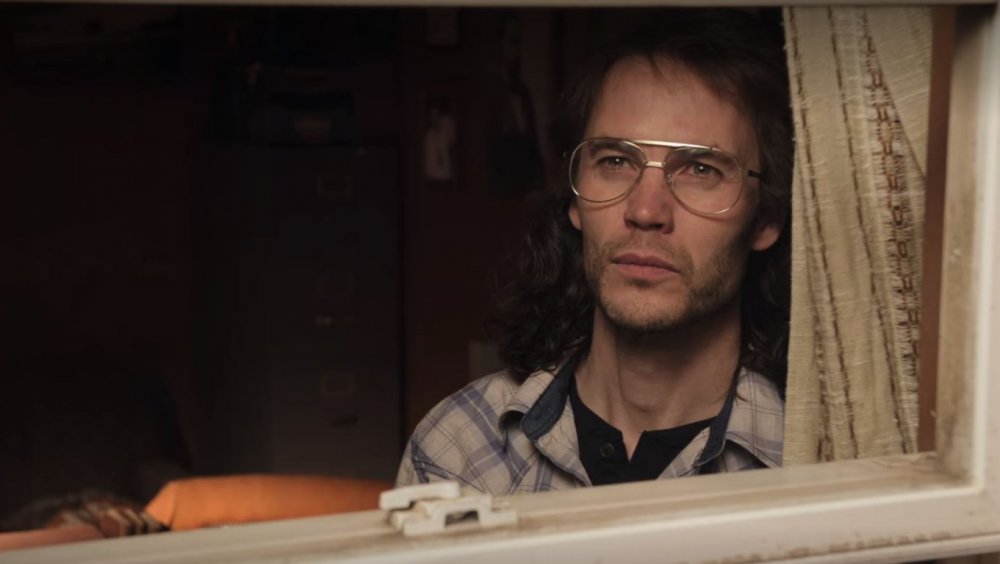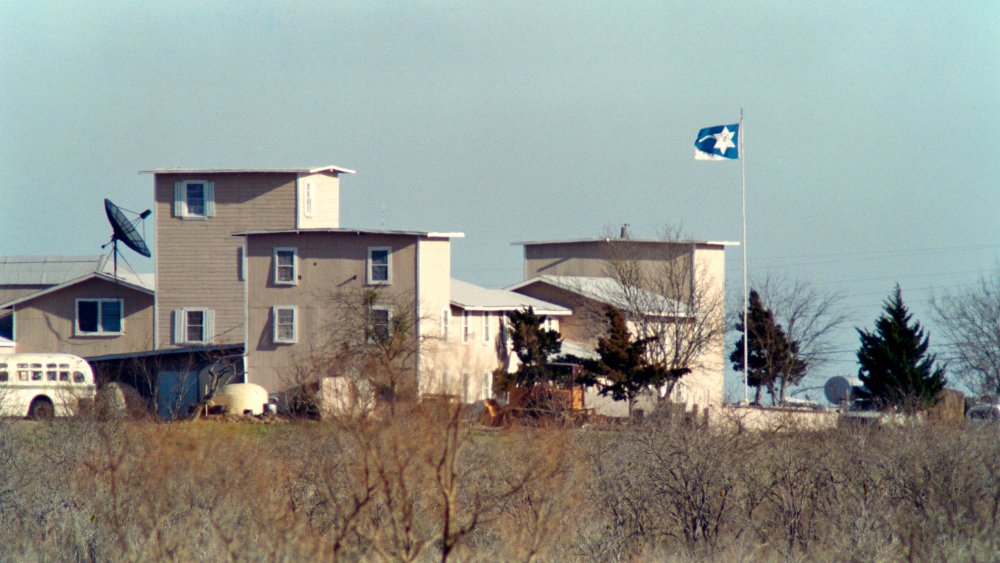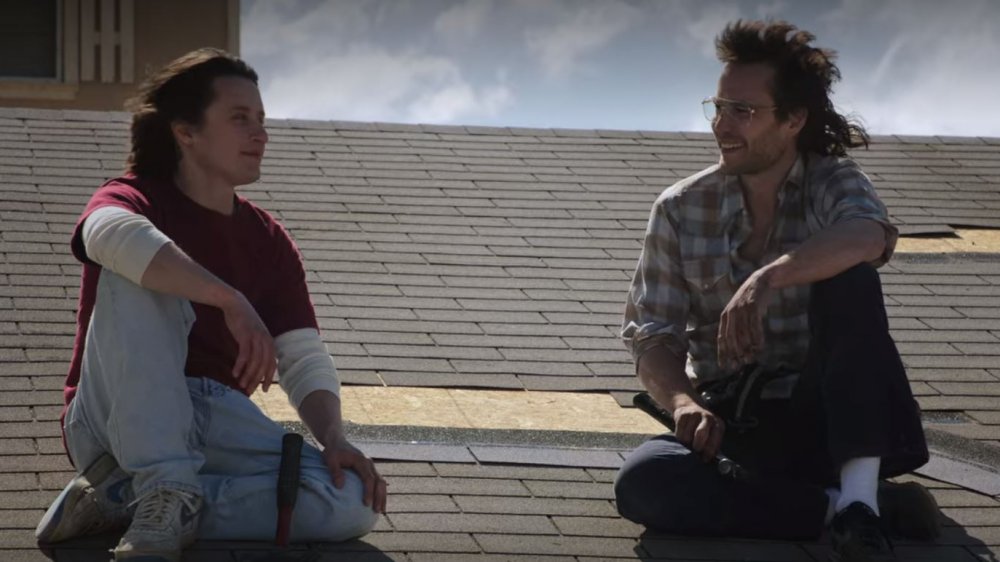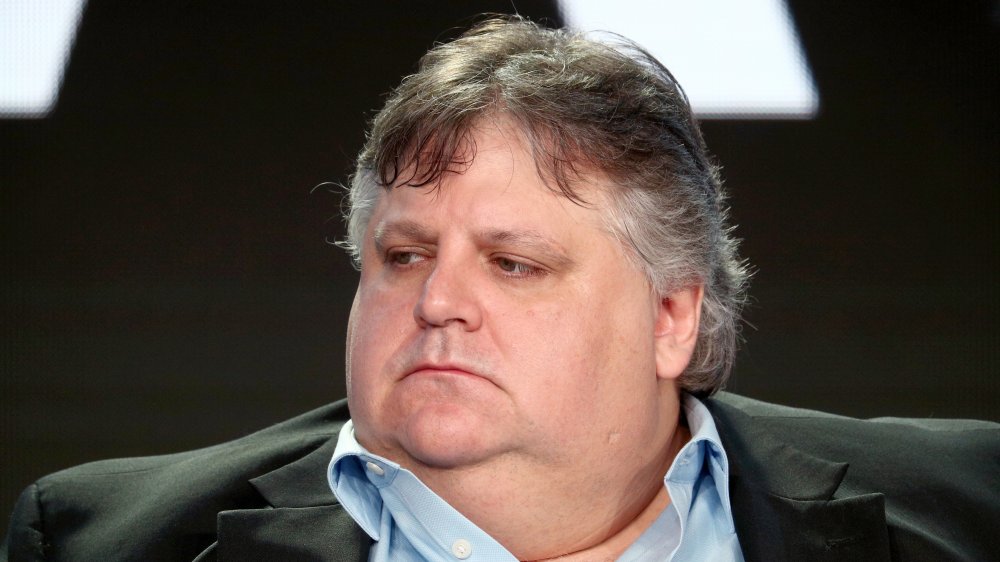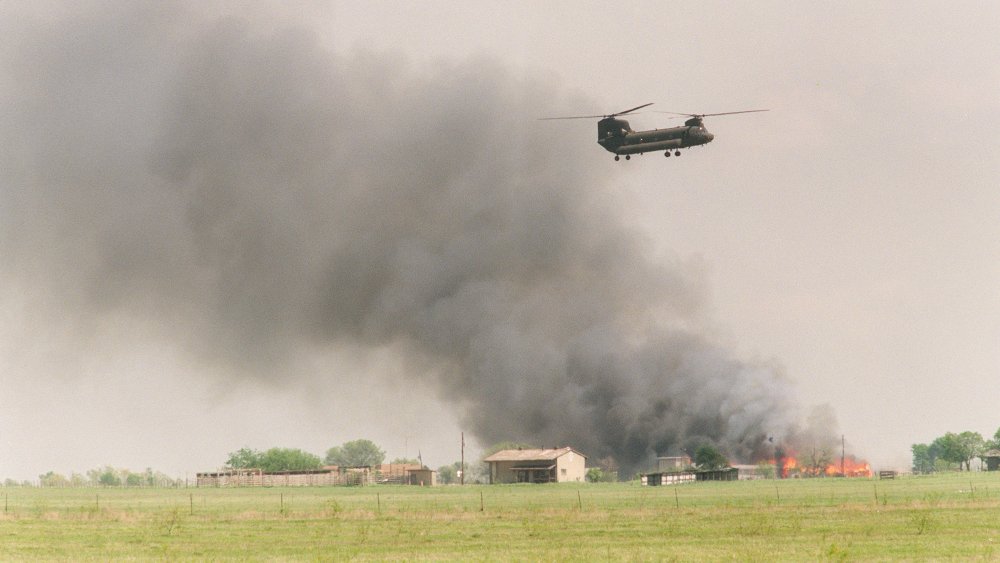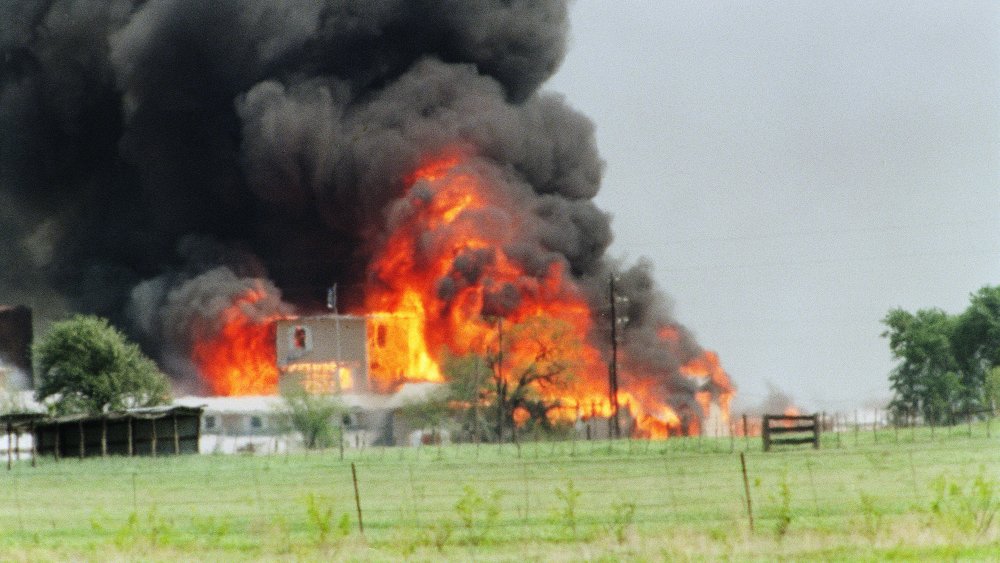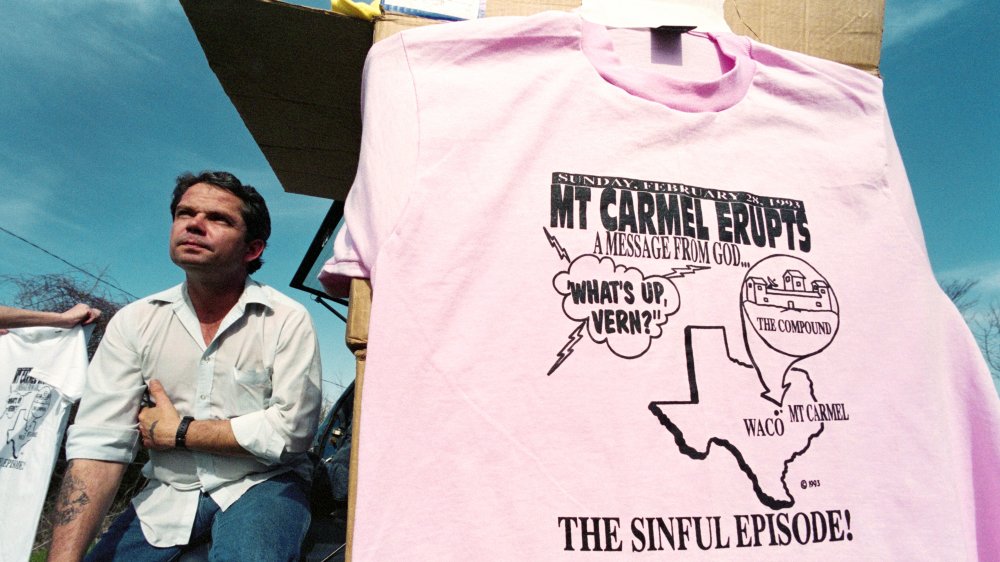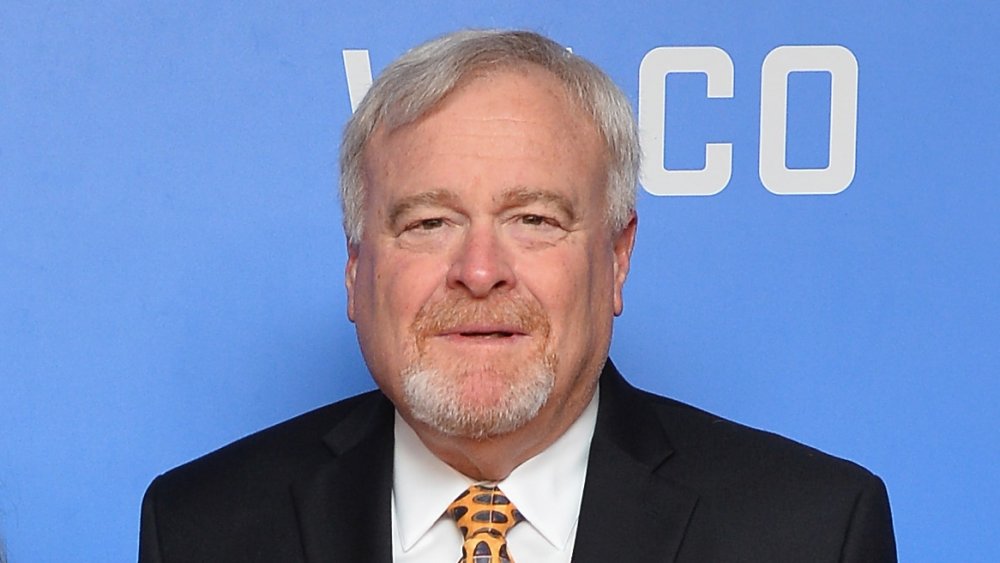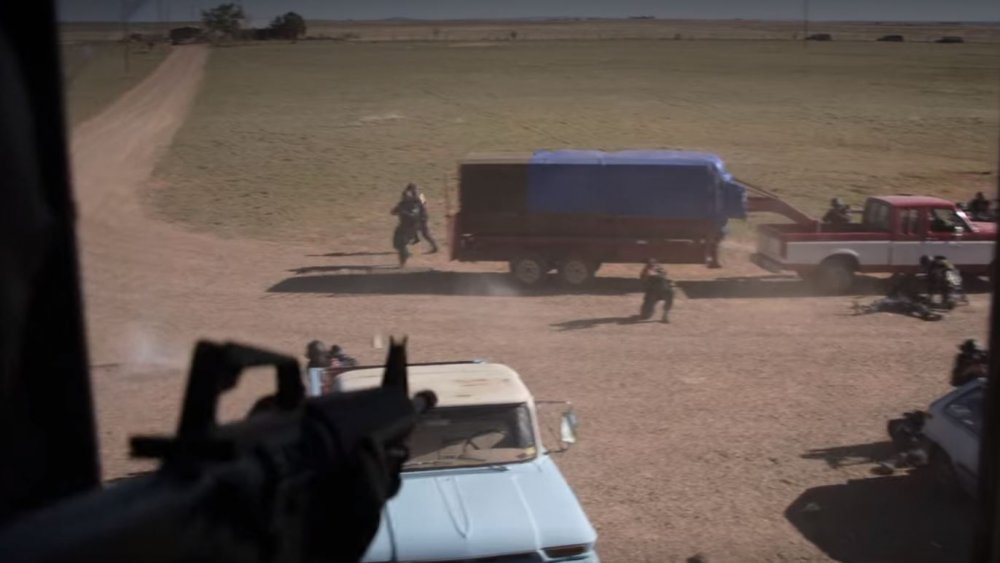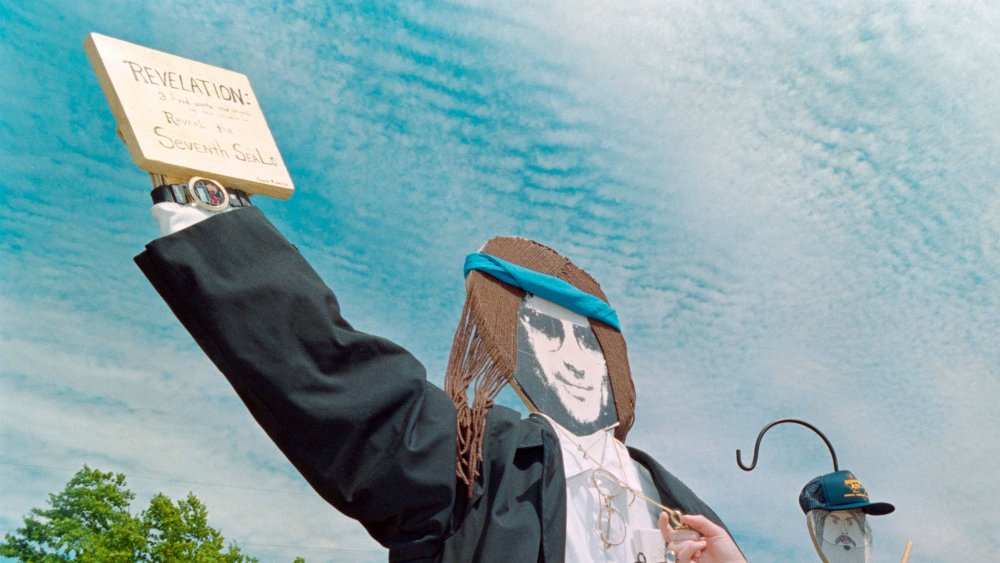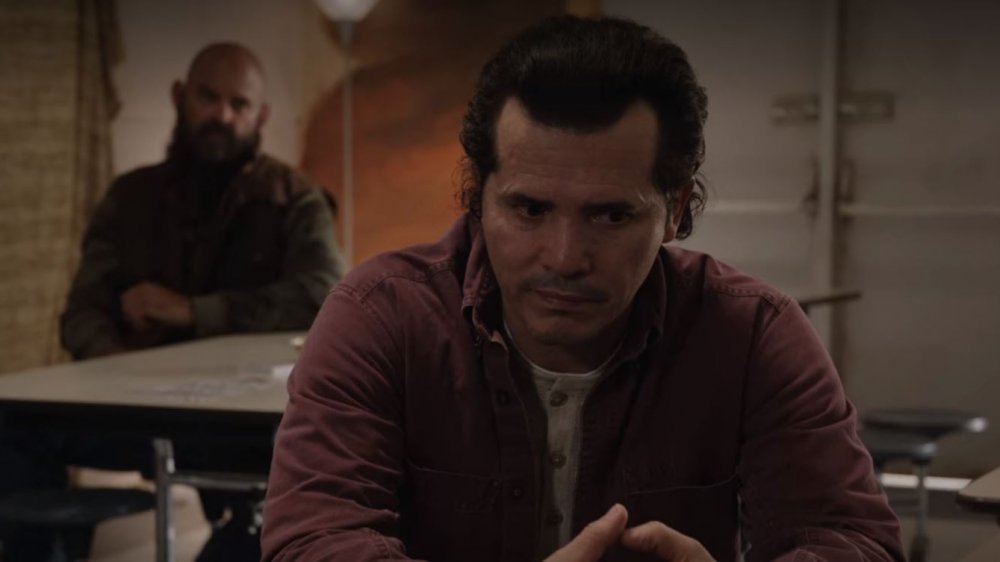Lies Waco Told You About The Siege
The Waco miniseries is an exciting, dramatic, and ultimately sad telling of the 51-day siege on the Branch Davidians. Some saw government overreach, others saw a doomsday cult, but everyone considers it tragic. The show is primarily based on two books — Stalling for Time: My Life as an FBI Hostage Negotiator by Gary Noesner and A Place Called Waco by siege survivor David Thibodeau. This offered a rare chance to humanize the Branch Davidians. It also indirectly opened up the series to some fuzzy details about the real-life event.
Much of what happened during the siege is hazy — only nine Mount Carmel residents survived the burning of the compound, and there's plenty of credible reason to doubt a government's investigation into such a public failure. Finding public confirmation on many facts is a challenge.
But even with that caveat, Waco still perpetuated some falsehoods. Some were the result of compressing the time frame, others were standard dramatic license taken in true story adaptations. More damningly, some were misconceptions that have been held for years that nobody decided to correct in a true story. Here's all the lies Waco told you about the real life siege.
Nobody knows who shot first at Waco
Waco unambiguously shows the ATF firing the first shots on February 28th, shooting at the Branch Davidians' dogs. This is, in reality, just one theory for what happened. We don't know who shot first and almost certainly never will.
One theory, as reported by Communities Magazine, posits that the ATF shot first, by accident — an ATF agent climbing a ladder may have accidentally discharged his pistol in its holster, which would sound like it came from inside the building. Early on, an ATF agent suggested the first shot was indeed the ATF firing at dogs, but he later retracted his statement, according to Frontline. Meanwhile, two journalists at the scene claimed that the shots originated from inside the compound. The FBI also claimed to have video that proved the Branch Davidians shot first, but never showed it at trial.
That both sides were ready to fight is without question. Who shot first, between the time that has passed and the lack of tangible evidence, is almost unknowable. To this day, both the ATF and surviving Branch Davidians swear that the other side took the first shots.
David Thibodeau and David Koresh met years earlier
Waco shows David Thibodeau and David Koresh meeting at a Texas bar and quickly hitting it off. There's not a lot of daylight between the two meeting and the siege starting. In reality, the two had met years earlier and several states away.
According to the Hartford Courant, the two met by chance in 1990 at a Guitar Center in Los Angeles, California. Thibodeau just moved west and went to pick up new drumsticks. Koresh was in the same store and introduced himself. After talking music, Koresh handed Thibodeau a business card with bible verses on it. Thibodeau had no interest in being in a Christian band, but Koresh suggested he had different insights into scripture. Thibodeau, unable to get this off his mind, called Koresh a week later. Several months of talking and gigs later, Thibodeau was invited to Mount Carmel.
John Erick and Drew Dowdle, Waco executive producers, loved this detail and intended to include it but just couldn't make it fit the narrative. It's a normal Hollywood case of compressing a timeline.
David Thibodeau didn't consider himself a Branch Davidian
The David Thibodeau of Waco turns from something of a skeptic to an active member of the Mount Carmel community. He buys into David Koresh's rules, beliefs, and way of life — essentially becoming a member of the Branch Davidians. In real life, Thibodeau wasn't a member or a true believer — he mostly just lived there.
Though Thibodeau still speaks highly of Koresh's ability to interpret scripture, he never considered himself a Branch Davidian. He'd occasionally participate in bible study and found Koresh's sermons fascinating but was more a resident of Mount Carmel than a practicing member. He never saw Koresh as the messiah and recognized he was deeply flawed — he was just a friend. When Thibodeau testified during Congressional hearings on the siege, he was noted as someone who "lived at the Branch Davidian residence but did not consider himself to be a member of the Branch Davidian religious community."
Years later when interviewed on Megyn Kelly Today, Kelly asked him if he still considered himself a Branch Davidian. He said he never was one, he was just "living with his friend David in a compound."
The Branch Davidians weren't just Americans
The Branch Davidians are depicted in Waco as exclusively American. This makes sense from a narrative perspective — the series depicts the siege as a specifically American tragedy. This overlooks an important aspect of the true story: many of the Mount Carmel residents were foreign nationals.
David Koresh and his leadership group made several trips overseas to recruit new followers. He and Steve Schneider visited England around 1988, according to the BBC, and preached his gospel to packed rooms. Altogether they recruited 30 followers — though contemporaneous reports indicate only 26 of them were on hand for the siege, and 24 of whom were dead by the end of it.
Also around 1988, Koresh visited Australia. It was then that he met and recruited Graeme Craddock, one of the nine survivors of the siege, who still believes in Koresh's divinity. Several people from New Zealand, including sisters Grace and Rebecca Adams, flew to Texas to join the Branch Davidians. Grace faced abuse at the compound and left when her visa expired in 1991 — but not before getting treatment at a California psychiatric hospital. Rebecca ultimately perished in the blaze.
Steve Schneider might have died of smoke inhalation
In Waco, Steve Schneider's death is depicted as a suicide, the result of him putting the gun in his mouth and pulling the trigger. While a blast to the head was mentioned on his autopsy report, it might not be how he actually died — a detail the show doesn't concern itself with to be a bit more cinematic.
Steve Schneider and David Koresh were indeed found dead in the same room, though far enough apart the press considered them "alone." Koresh died of a gunshot, but Schneider was a bit more complicated. Early reports indicated that a gunshot may have contributed, and an FBI spokesperson contemporaneously suggested that Schneider killed Koresh and himself with the same gun. This seems to be the story that stuck even though it's not definitely true.
Family members of Branch Davidians hired their own pathologist to double check the federal government's own autopsy reports and both parties concurred. Per the New York Times, this pathologist concluded Schneider's death was "smoke inhalation and carbon monoxide poisoning with possible traumatic head injury from either a blast or gunshot." Given that the compound was getting assaulted and bulldozed, there's other plausible explanations for what could cause a blast without ruling out a gunshot. More importantly, the smoke inhalation would prove that Schneider wearing a gas mask until moments before his death was a lie. But the FBI was still saying officially that Steve Schneider died from a gunshot wound months after the pathologist came to the smoke inhalation conclusion, so we may never know for sure.
Nobody knows who shot David Koresh
One of the few unambiguous parts of the raid is David Koresh's death by gunshot. Waco depicts Koresh asking Steve Schneider to shoot him. This was all speculation — nobody can be quite sure how Koresh was shot because the only possible witness is dead.
Koresh and Schneider's bodies were found in the same room. Koresh himself had a bullet hole in the middle of his forehead, which took days to reconstruct. According to the Washington Post, early on, the FBI indicated that Schneider shot Koresh and killed himself with the same gun, though this was partially contradicted by Schneider's autopsy report that said he died of smoke inhalation. It's also possible that Koresh committed suicide, or was killed by another member of the Branch Davidians.
The FBI claims that they fired no shots that day, though several people died of gunshot wounds — likely from members shooting each other when they realized there was no way out. Ultimately, nobody will ever know for sure who shot David Koresh.
If you or anyone you know is having suicidal thoughts, please call the National Suicide Prevention Lifeline at 1-800-273-TALK (8255).
David Koresh didn't found the Branch Davidians
Waco makes it seem like the Branch Davidians were based on David Koresh's teachings and Mount Carmel was built at his behest. This is a misconception held by most and perpetuated by the series — according to Vox, the Branch Davidians have a long history, and Koresh only became the leader after a power struggle.
The Davidians started as offshoot of the Seventh Day Adventists in 1934. They were founded by a man named Victor Houteff, who later bought the property that would become Mount Carmel. Houteff died in 1955, and the group was split into two competing factions. The surviving faction went by "Branch Davidians" to differentiate themselves.
David Koresh only joined the Branch Davidians in 1981, but quickly picked up a strong following. He spent much of the mid-80s in a power struggle with George Roden, the group's heir apparent. Years of political and paramilitary maneuvering culminated in a 1987 shootout between their two camps, which saw Koresh and several of his followers charged with attempted murder. All were acquitted and Koresh faced a mistrial. Koresh had become the de facto head of Mount Carmel by this point. Their feud ended once and for all in 1990, when Roden was arrested for murdering another rival. It was only then that David Koresh became the undisputed leader of the Branch Davidians.
Gary Noesner was only there 25 days
Michael Shannon appears in every episode of Waco as Gary Noesner, an FBI negotiator tasked with talking down David Koresh. He's there for almost the entire raid and things go south almost immediately upon his removal. This is only partially true — according to Time, he was there for 25 just days before getting removed. He was kept on for most of the series for the sake of narrative consistency instead of accuracy.
Noesner wasn't the sole negotiator, but he was by most estimates the most successful. He developed a decent rapport with Koresh and got 35 people released during his time. But he had tensions with other FBI and ATF agents, which led to his removal. In his own words, his supervisors saw him as an "impediment to those who wanted to take a more aggressive role." No one else on the compound left after his firing until the nine escaped on Day 51.
Noesner also didn't watch Mount Carmel burn at his house. He was called into the FBI's headquarters on the final day of the siege. Upon seeing the fire, he says he "got more angry than I had ever been in my life" and walked out.
The gunfight at Waco lasted far longer
The shootout in Waco lasts for only a very short time before a ceasefire is reached. It's a tense few minutes. In reality, it was a tense few hours. The intensity was mostly accurate, but it was just a small part of a far larger and longer firefight. The timeline was compressed in the series for dramatic effect and storyline efficiency.
According to the book True Crime: Mass Murderers, the firefight was at full intensity for around 45 minutes and lasted for around – depending on the source — two to three hours. At the time, it was the longest gun battle in the history of US law enforcement. Somehow the ATF managed to get a call inside the compound. Details of how are scarce, but it's more likely the ceasefire was arranged directly between the ATF and Branch Davidians instead of outside sources.
The main reason for the ceasefire? The ATF was running low on ammo. The Branch Davidians still had plenty.
There were doubts how much David Koresh bought into his own mythmaking
Taylor Kitsch's David Koresh is, if nothing else, a true believer. For all his many flaws, he buys into his own divine abilities. To this day, many hold this view about the real-life Koresh, according to the Austin American-Statesman. But many FBI agents and some surviving Branch Davidians have doubts how much Koresh believed in himself.
Gary Noesner says the FBI team on site noticed David Koresh often altered or backtracked on his beliefs. One time he told Noesner that everyone would come out on Easter, but when the day arrived he said "It's an Easter, it's not my Easter." More strikingly, when the FBI mentioned they had Whataburger for dinner, Koresh said, "If it turns out I am the son of God, the world's going to find out about Whataburger." Levity aside, Noesner found it curious that someone so sure of himself would hedge his bets with "If it turns out..." Additionally, FBI agent Byron Sage spent an hour talking to Koresh about his faith. During this time, Koresh implied that he had specific Christlike attributes, but danced around outright calling himself Christ.
The tipping point came when Sage said he was confident in his salvation and couldn't be talked out of it. Koresh made no attempt to change his mind, which was a major tell to Sage — a Christ would not turn down a challenge of faith like that. "From that point forward," Sage said, "it is absolutely patently clear in my mind what we're dealing with. This guy is not delusional. He is not a Messianic complex. He does not buy off on his own con."
The real Jacob Vazquez never bought into David Koresh's way of life
The character of ATF Agent Jacob Vazquez — played by Luigi Mario himself, John Leguizamo — acts as Waco's Cassandra. His warning that David Koresh knows the ATF is coming fell on deaf ears, and he's thrown under the bus when his own agency says he was "compromised" after he expresses sympathy for them. This is only partially true and plays on a lie that resulted in a lawsuit.
The real Jacob Vazquez is named Robert Rodriguez. Like Vazquez, he was an ATF agent assigned to spy on the Branch Davidians. According to the Waco Tribune-Herald, Rodriguez made seven trips to the compound, at one point joining a 13-hour prayer service. He also was the first to warn the ATF that the Branch Davidians knew a raid was coming but was ignored. Unlike Vazquez, Rodriguez never bought into David Koresh's way of life or became sympathetic to him. Koresh also never asked him to stop the raid. This was all based on lies told by the ATF.
While Koresh suspected that Rodriguez might be a government agent, he never singled him out. Rodriguez visited the compound the day of the raid only to find out that Koresh was tipped off. Rodriguez excused himself and was seen off with a handshake. His supervisors did try to make him a scapegoat off of this. Rodriguez was so upset at the time that he sued the ATF for defamation, and eventually got a $2.3 million out-of-court settlement. Waco decided to keep the story where he was a turncoat.
Some housekeeping on the truth of Ruby Ridge
Given how the show ties Ruby Ridge to the Waco siege, it's worth addressing some of the misconceptions on the events in Idaho. It's understandable why they wouldn't want to spend too much time outside Waco on a show named Waco, but they compressed the Ruby Ridge timeline and tweaked some facts.
Waco depicts the siege at Ruby Ridge lasting basically a day or two, but in reality, it was an 11-day-long standoff. According to the Washington Post, the ATF also took even longer to realize they killed Vicki Weaver, as evidenced by the fact that they tried to bribe her out with pancakes the next morning. The Weavers were also given a chance to retrieve Vicki's body instead of just letting it decompose in the open.
While Gary Noesner had a hand in negotiation tactics at Ruby Ridge, Smithsonian says he was not physically present there. Bo Gritz was a part of negotiations, but it wasn't resolved in just a few minutes.
